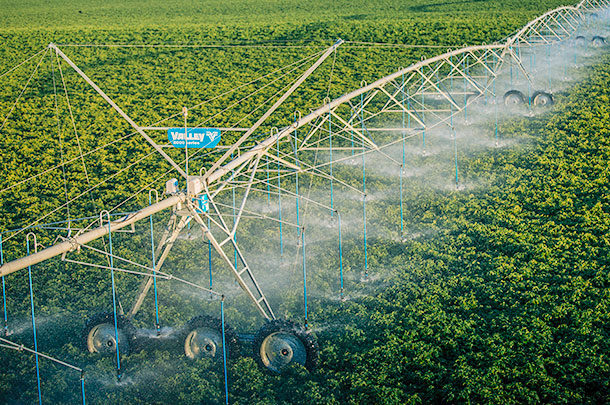Growing up, I remember always trying to use a set of wheels to help with whatever job I was doing. Unfortunately, trying to come up with “an easier way” often cost me more time than it would have to just do the job the proven way from the beginning using the existing tools.
Looking back, Drucker’s quote makes a lot of sense: I should have put my time into doing the job more efficiently rather than trying to create a new way to get the job done.
I look at irrigation today and know it works, and farmers understand it works, which is why they use it. I just had the opportunity to be with the Irrigation Association in Washington, D.C., and the phrase “more crop for the drop” was coined in explaining to congressional staff we need to become more productive with the infrastructure already in place.
Efficiency can drive the capital cost up, but the long-term operations will have a return on investment, allowing the farmland to be more productive with the same inputs, allowing for more profitability. For example, efficiency can mean more than just the right sprinkler package; it can mean pipe sizing and proper horsepower to get the job done. The more efficient the pipe size is, the less horsepower it takes to move the water, resulting in fewer kilowatt hours on the meter.
Technology can also help make farming more efficient. Being able to control most irrigation systems from cellphones allows you to be in more places at once. “Opportunity cost” is not a tangible expense, but it still shows up in the bottom line.
A farmer I know has about 15 center pivots, and he used to ride around early in the morning, at lunch time and then again every evening before bedtime. His wife would tease him and ask him how “the ladies” were. He then discovered a radio system that allowed him to monitor and control his pivots from his cellphone. Needless to say, his wife was pretty upset when she found out he could have done this years before.
In addition to the hours of time and gallons of fuel for these trips, you have to calculate the loss of run time if a single pivot malfunctions just a few minutes after that farmer left the field. That downtime over the next few hours until it was discovered on a hot, humid day could be detrimental to the crop, to say nothing of the potential damage while waiting for the pivot to be fixed.
This is, of course, the worst-case scenario, but that thought process led this farmer to install the radio system. The remote monitoring changed his entire schedule on a daily basis, allowing him more time farming and less time driving.
Of course, the question comes into play: “What about checking the crop?” The crop still needs to be checked; controlling irrigation doesn’t take the place of going to the field to check the crop on a regular basis. But the point remains: The desire for efficiency drives the development of technology. Wanting to discover a better way allows for future growth and productivity.
Soil moisture sensing and irrigation scheduling are also important to irrigation efficiency. Knowing when to irrigate is always a big question, and over-irrigating can be just as dangerous as not irrigating enough. There is technology out there to help with these decisions.
Irrigation scheduling is based upon the combined factors of soil type, weather, soil moisture content, crop type, etc., letting growers irrigate just what is needed in the most efficient way.
The question is always asked: “How much is this going to cost?” The answer depends on site-specific due diligence and application. But there is a return on investment on the equipment. Every time there is an irrigation cycle saved, a savings on water and electricity results. There are many types of soil moisture sensors and irrigation scheduling programs to help farmers understand how to use this new technology.
Irrigation efficiency is creating more productive farmland. The Irrigation Association recently shared only 18 percent of farmland is irrigated, but that 18 percent produces 40 percent of the harvest. That statistic is staggering to me, knowing most of that farmland probably isn’t even running at its highest efficiency. That little bit of farmland has a huge role in feeding the world’s ever-growing population. Efficiency creates more productivity, allowing for even more harvest.
In conclusion, I’ve discussed irrigation efficiency, but the main catalyst is technology. Technology truly drives efficiency to make the most out of what we have and become more productive. So maybe I wasn’t so far off all those years ago when I tried to add wheels to whatever I was doing; I just needed to be more efficient.
For all the solutions and products that have been discussed today, please visit your local irrigation solutions provider and learn what you can do to become more efficient and, in return, more productive. ![]()
PHOTO: Efficient irrigation is more than just proper horsepower and pipe sizing; it is also using technology to monitor and control in a productive way. Photo by Tyler Fields.

-
Tyler Fields
- National Sales Manager
- Valley Water Management
- Email Tyler Fields











